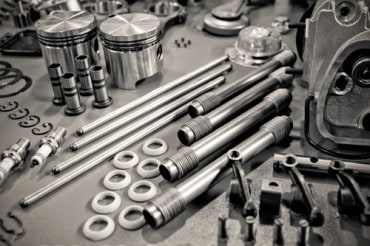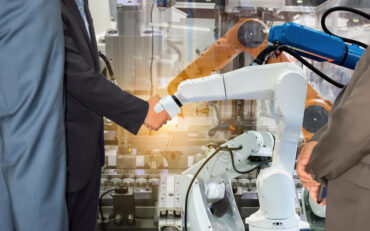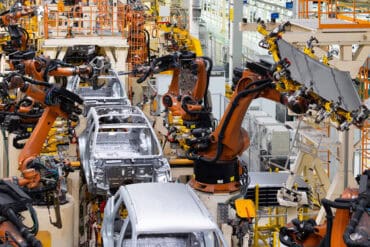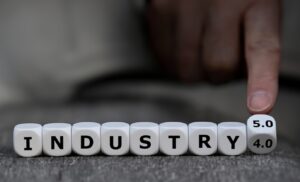
Discover how Industry 5.0 is transforming manufacturing by blending human creativity with technology for smarter, more sustainable operations.
Around 2011, discussions about Industry 4.0 began to take off. It would reduce mistakes, create better oversight of complicated and often hidden processes in manufacturing, and usher in an era of efficiency we’d never before seen. And it did. Now, Industry 5.0 looks to take the advances from its predecessor and truly blend the best abilities of both words — humans and machines. Let’s look at what we can expect from this next phase.
What is Industry 5.0?
Industry 4.0 focused on automation and gathering clear, comprehensive data. Industrial IoT was a significant part of ushering in this era of industry. Thanks to new types of sensors, cloud connections, and the launch of remarkable artificial intelligence capabilities, manufacturers could engage in a level of decision-making that wasn’t possible before. Now, decision-makers all the way down the ladder could look at what the data was telling them.
Industry 5.0 enhances this foundation by prioritizing human-machine collaboration, personalization, and sustainability. Mass automation is a good thing in certain applications because it removes the possibility of human error and safety risks, allowing machines to handle mundane tasks without tiring or getting distracted. But machines still cannot “think,” not the way humans can. They have the ability to process more data than we could ever conceive of with our human brains, but without people to contextualize that information, we run into problems.
Within the nuances of manufacturing environments, humans are still a very necessary element. When humans and machines collaborate, you not only get a more flexible environment, you also get one that’s more responsive and innovative.
This shift acknowledges that humans possess unique strengths—like creativity, empathy, and complex decision-making—that machines, no matter how advanced, cannot replicate. By combining human ingenuity with the power of IIoT and AI, manufacturers can achieve a balance between automation and personalization.
For example, imagine a factory where IIoT-connected devices continuously monitor machinery. In an Industry 4.0 setup, the system might automatically adjust parameters to optimize efficiency. In an Industry 5.0 scenario, the same data is fed into an augmented reality interface. Now, it’s a person empowered by data who makes small tweaks to the process in real time based on both the data and their expertise.
See also: Top Industrial IoT (IIoT) Trends for Manufacturing in 2025
How IIoT bridges the gap between Industry 4.0 and Industry 5.0
The leap from Industry 4.0 to Industry 5.0 marks a shift from a purely data-driven automation model to one emphasizing human-machine collaboration. IIoT remains a foundational technology, but its role evolves to support a more integrated, human-centric approach.
1. Automation vs. Human-Machine Collaboration
- Industry 4.0: Focused on maximizing efficiency through automation, using IIoT to connect machines, optimize workflows, and reduce human intervention.
- Industry 5.0: Enhances automation by reintroducing human creativity into the process. IIoT provides real-time data that empowers workers to make decisions, fostering collaboration between humans and machines.
- Example: Imagine a manufacturing line where IIoT sensors detect subtle variations in raw material quality. In an Industry 4.0 setup, the system might automatically adjust machine settings. In Industry 5.0, operators receive this data on intuitive dashboards, allowing them to tweak processes based on their experience to achieve higher-quality outputs.
2. Data Optimization vs. Personalization at Scale
- Industry 4.0: Leveraged IIoT for optimizing manufacturing processes, reducing costs, and enhancing productivity.
- Industry 5.0: Focuses on personalization, using IIoT data to adapt production lines for unique customer demands without compromising efficiency. This enables manufacturers to deliver customized products on demand.
- Example: IIoT-powered digital twins allow manufacturers to simulate and adjust production settings on the fly, enabling rapid customization without sacrificing throughput.
3. Predictive Maintenance vs. Augmented Human Decision-Making
- Industry 4.0: Relied on IIoT for predictive maintenance, using data analytics to anticipate and prevent equipment failures.
- Industry 5.0: Extends predictive capabilities by integrating human intuition with machine data. IIoT provides rich, contextual insights, enabling operators to troubleshoot issues more effectively.
- Example: Instead of just receiving automated alerts, workers equipped with IIoT-connected devices can assess equipment health and proactively address potential issues before they impact production.
4. Scalability vs. Sustainability
- Industry 4.0: Prioritized scalability and efficiency in production to meet high-volume demands.
- Industry 5.0: Adds a focus on sustainability, leveraging IIoT to optimize energy use, reduce waste, and support eco-friendly initiatives. The goal is to create a more resilient and sustainable manufacturing process.
- Example: IIoT sensors monitor energy consumption in real time, allowing factories to adjust operations to minimize their environmental footprint.
What’s next for smart manufacturing?
Thanks to 5.0, we’re looking forward to deeper human-machine collaboration, where real-time data empowers operators to make intuitive, informed decisions right on the factory floor. This will happen through the continued use of IIoT and other technologies like digital twins. As AI analytics becomes more refined, human-machine collaboration in decision-making is a given.
As factories become more connected, cybersecurity will need to keep pace to safeguard sensitive data and ensure system integrity. IIoT sensors, combined with AI analytics, will drive sustainability initiatives by optimizing energy consumption and reducing waste. Together, these technologies will transform factories into agile, resilient ecosystems capable of adapting to shifting market demands and disruptions.
Overcoming Challenges in the Transition to Industry 5.0
Transitioning to Industry 5.0 brings new challenges that manufacturers must address. While IIoT and advanced technologies provide the foundation, overcoming these obstacles is key to a successful shift:
- Data Silos: Industry 4.0 often led to isolated data systems. Industry 5.0 requires seamless data integration, using IIoT to break down silos and enable real-time insights that enhance collaboration.
- Balancing Automation with Human Oversight: Moving from full automation to human-machine collaboration demands new workflows. Technologies like augmented reality (AR) and AI-driven dashboards empower operators and require significant training to ensure effective adoption.
- Cybersecurity Risks: With increased connectivity, protecting IIoT networks is critical. Advanced cybersecurity measures are necessary to secure both machine data and human interfaces against growing threats.
- Upskilling the Workforce: The shift to Industry 5.0 means workers must take on more strategic roles, leveraging IIoT and AI insights. Investing in upskilling programs is essential to prepare employees for these new, data-driven positions.
- Sustainability Goals: As sustainability becomes a priority, manufacturers must optimize processes to reduce waste and energy use. IIoT-powered real-time monitoring helps align production with environmental objectives without sacrificing efficiency.
What’s coming is human-centered
As manufacturers move beyond the efficiency-driven focus of Industry 4.0, the shift to Industry 5.0 opens up new possibilities for human-machine collaboration, personalization, and sustainability. By leveraging technologies like IIoT, AI, and digital twins, companies can transform their operations to boost productivity and create more resilient and adaptive manufacturing ecosystems. The journey to Industry 5.0 isn’t just about deploying new technology. It’s about redefining the role of humans in the factory of the future.

